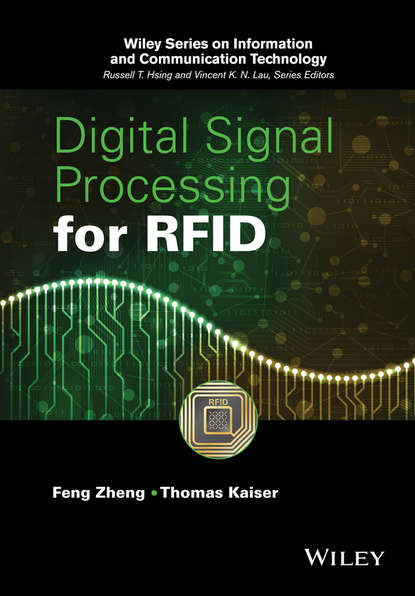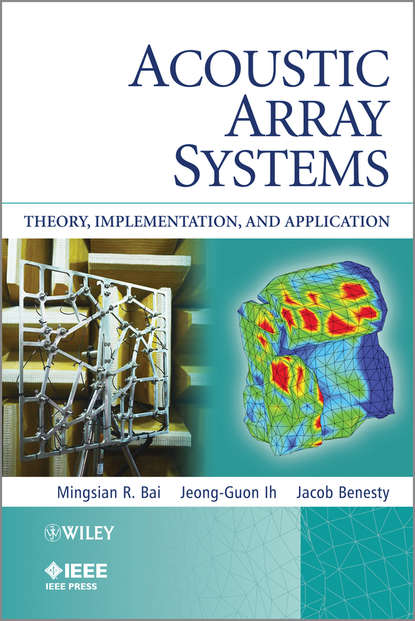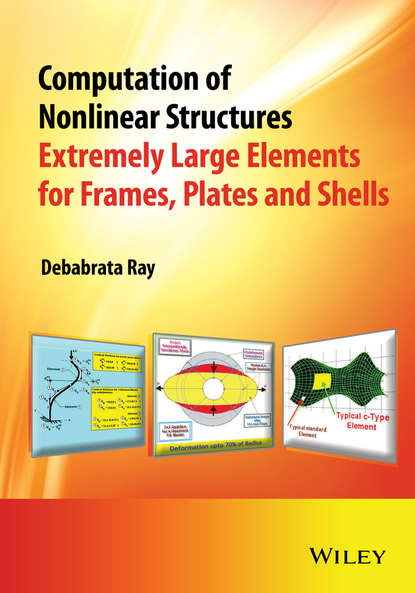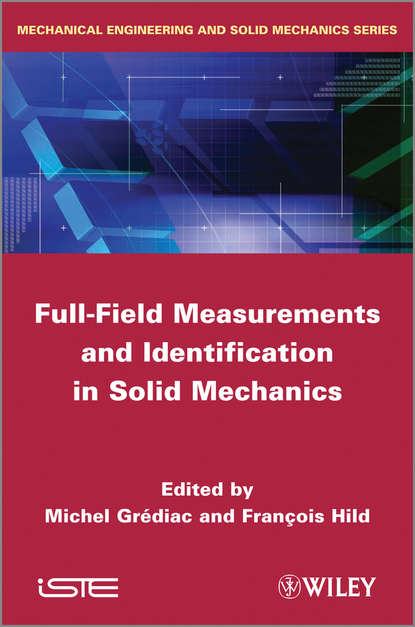Книга "Digital Signal Processing for RFID" рассматривает основы технологии RFID и последние научные достижения в области обработки сигналов для RFID, включая MIMO, слепое разделение источников, антиколлизию, локализацию, скрытые и бесконтактные RFID. Она предназначена для студентов магистратуры, а также научных и профессиональных исследователей и инженеров в области технологии RFID и позволяет читателям ознакомиться с последними теоретическими разработками и приложениями обработки сигналов для RFID. Основные особенности книги: систематический и всесторонний обзор применения современных техник обработки сигналов для систем RFID; обсуждение принципов функционирования, моделей канала передачи данных RFID, протоколов RFID и конструкции аналоговых/цифровых фильтров для RFID; исследование модуляционных схем, ориентированных на RFID и их производительности; акцентирование внимания на исследовательских областях, таких как MIMO для RFID, слепая обработка сигналов для RFID, антиколлизия нескольких RFID-меток, локализация с помощью RFID, скрытые и бесконтактные RFID; книга содержит таблицы, иллюстрации и примеры проектирования.
Эта книга обсуждает основы RFID и новейшие результаты исследований в области обработки сигналов для RFID, включая MIMO, глухое разделение источников, предотвращение столкновений, локализация, concealed RFID и непереводимые RFID. Целевая аудитория этой книги - студенты и профессиональные исследователи/инженеры в RFID технологий, это позволяет читателям получить лучшее представление о новейших теориях и применениях обработки сигналов в отношении RFID. Ключевые Особенности: Предоставляет систематический и всеобъемлющий обзор в применении современных техник обработки сигналов во взаимосвязи с системами RFID Обсуждает принципы работы и модели каналов RFID. Описывает протоколы RFID и аналоговую и цифровую фильтрацию для RFID Анализирует схемы модуляции, ориентированные на RFID и их параметры Освещает такие исследовательские области, как MIMO для RFID глухая обработка сигналов для RFID предотвращение множественных столкновений RFID, установка положения с RFID. Скрытое RFID и нередактируемое RFID Содержит таблицы, иллюстрации и примеры дизайна.
This book focuses on fundamental aspects of radio frequency identification (RFID), as well as the state- of-the- art academic research highlighting signal processing in this field with a focus on multiple-input and multiple-output (MIMO) signal processing, blind source separation (BSS) algorithms, anti—collision, location agents, covert radio tags and even chipless tags. It is hoped that the book will be of significant user interest, and prior knowledge of graduate students, future theses and postgraduate researchers and engineers working in the field of RFID devices to make them cognizant of current theory and signal processing applications in the world of RFID. This novel approach to this subject, through an analysis of success stories in the examining industry, will help both users become aware of issues surrounding new developments and those who seek similar fields of study. Some key objectives of this publication are: • To introduce, explain and motivate readers to signal processing developments within RFID systems and technologies in one publication. Provide an organisation and approach that integrates various techniques typically taught separately. Discuss RFID tag protocols, EMI, ECMI and FM modulated technologies. • Underpin different operational concepts, principles and channel models which influence and direct the actual progress, trends, collaboration, performance and general understanding of signal technologies applied to RFID. Discuss operation and covertness of various RFID methods as to provide content that motivates future researchers to develop further innovations in the area. The book starts off with chapter-wise fundamentals of (A)M-OFDM (including tones, OFDM and flexible signals), how to filter these outputs, which steganography and cryptography are employed for the purpose of messages and how AM modulation can even lead to the advantages of lightweight tags. These starts and continues with (B)S-OFDM wherein split transmitters distribute signals over multiple channels and multi-mode diversity vastly enhances the signal strength, emission is reduced. Chapter 9 further goes on to discuss spread transmitters which is resilient to noise distortions and data detection methods and signalling extraction aspects using blind source segregation techniques in BSS systems. All chapters are structured to ensure that readers get a good understanding before continuing to deeper sections. The second half, starting with chapter 10 propose an anti— collision algorithm implementation supplemented by signal processing models to protect RFID against data collisions. Concurrently, signals are narrowed into certain user areas and safeguard from environmental factors using location sensors and agents. Protocols employed in such implementations also come under discussion in chapter 11. Along formats and architectures for locating a RFID device on a real output premise, its inclusion into building structures and environments, the integrations of location systems into RFID usages are discussed. Covert RFID is explored in chapter 8 which highlight data hiding concepts and strategies that help to hide the presence of a tag. The employment of architecture—based manipulation along with steganographic and cryptographic aspects are reviewed. A brief explanation of chipless tag’s working mechanisms is explained in chapter 6 followed by recent discoveries and developments in respect to security. Chapter 13 explains and introduces some of the next generation tag technology in dive, such as carbon tag chips that can denote stored values in a commercial framework or next-generation electromagnetic tags (geo-tags) such as wireless local area networks that employ passive tags that require the commercial machines to read signals. Each chapter is structured as follows: Initial chapters : Authors; preface; introduction; organisation; acknowledgments; version notes; list of symbols and abbreviated terms. The chapter then divides into 6 headings or topics where the ensuing topics concern particular subentities in RFID. The main structure of the book covers: Chapter 3 : Basics of modulations: deterministic or pseudo random Chapter 4 : Error assessment in coding :FEC and IRA Chapter 5 : Codes with respect to receivers: DVB-T, DVB Chapter 7 :Securing RFID sensors: SO and RF privacy Chapter 8 : Steganography Heap waveform design solutions In chapter 7, Heap Waveform Design we will delve into the basics of implementing any type of RF wave. Upon designing and characterized the wave forms, implement it all in real time systems using software defined radios. Real time sinkha system will also be implemented to monitor and display the results are obtained form the experiments performed along. Experimental Setup Component Active Radio Transmitter RF Amplifier Antenna WCDMA Mobile Network Relay (Optional) RF Receiver RF Front End Baseband Receiver DSP Hardware Wireless Sensor Receiver sensor * Comparing Security: Deterministic vs Pseudorandom waves Vs MIMO vs Spread spectrum learning about how the vast array of advanced techniques work * Designing waveforms using SDNR Framework Chapter 9 : Blind Source Separation based Transmitters Design for different configurations Chapter 12 :Real time Emulation of Anti Collision Algorithms Chapter 14 :Advanced RF locale nagement and location Tag control systems implementing recent developments Processing in RFID Technology provides a heuristic that will allow authors to be edurated with the most up to date theory and practices of radiofrequency of identification. This knowledge base will aid future scholars to find solutions to novel challenges and uncover gaps in existing methodologies. Also, users can grasp the significance of influencing choices incorporating intricate twists and domain separation to suit their specific demands.
Электронная Книга «Digital Signal Processing for RFID» написана автором Thomas Kaiser в году.
Минимальный возраст читателя: 0
Язык: Английский
ISBN: 9781118824290
Описание книги от Thomas Kaiser
This book discusses the fundamentals of RFID and the state-of-the-art research results in signal processing for RFID, including MIMO, blind source separation, anti-collision, localization, covert RFID and chipless RFID. Aimed at graduate students as well as academic and professional researchers/engineers in RFID technology, it enables readers to become conversant with the latest theory and applications of signal processing for RFID. Key Features: Provides a systematic and comprehensive insight into the application of modern signal processing techniques for RFID systems Discusses the operating principles, channel models of RFID, RFID protocols and analog/digital filter design for RFID Explores RFID-oriented modulation schemes and their performance Highlights research fields such as MIMO for RFID, blind signal processing for RFID, anti-collision of multiple RFID tags, localization with RFID, covert RFID and chipless RFID Contains tables, illustrations and design examples



















